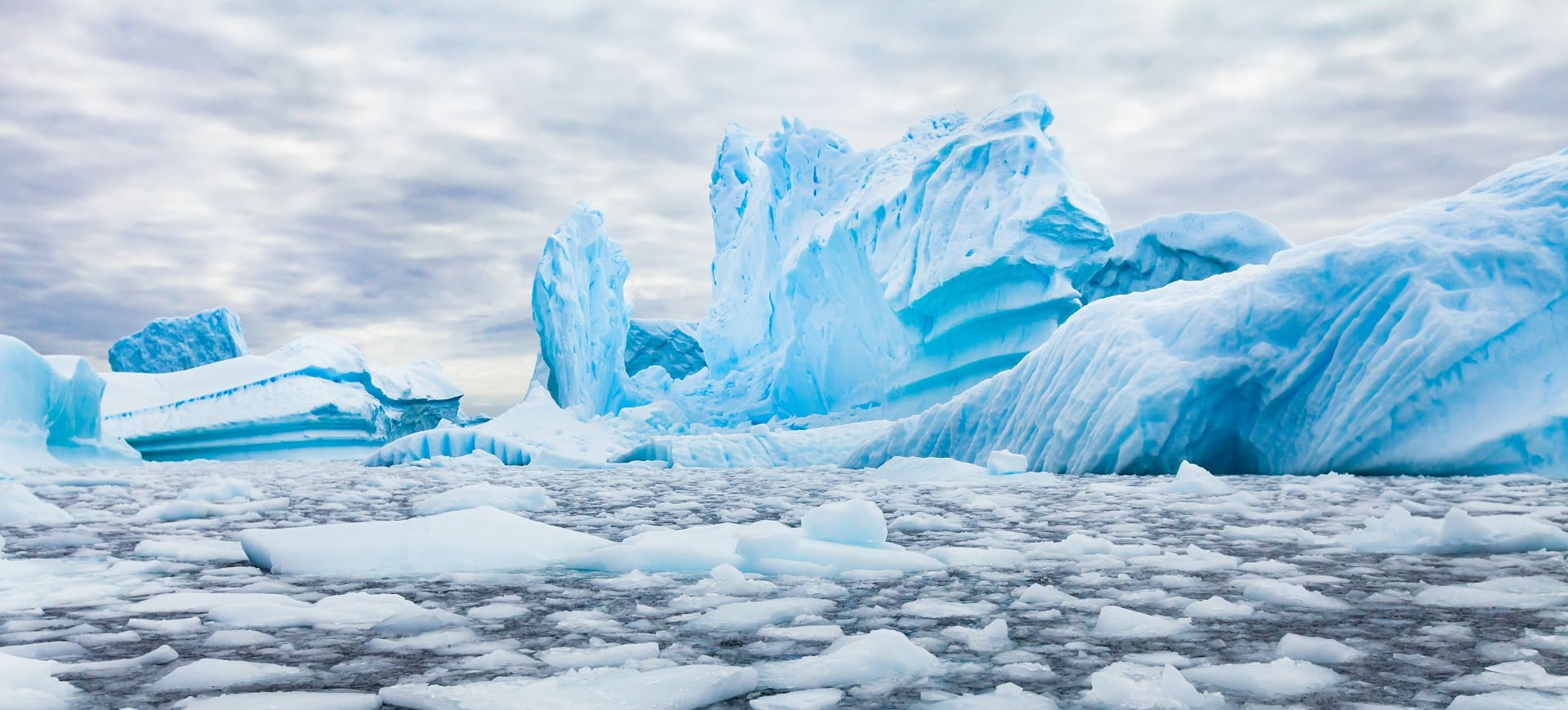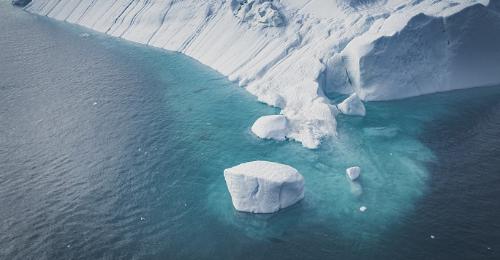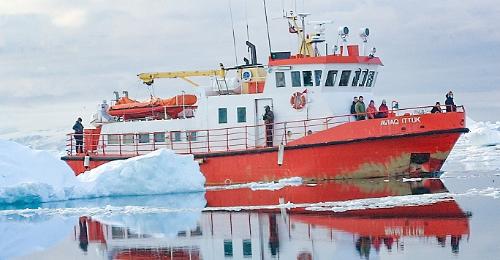
- University home >
- COP28 >
- Climate change and its impact on the Arctic
Dr James Lea is a glaciologist from the University of Liverpool’s School of Environmental Sciences, who was called upon by pariament to give valuable evidence from his research for the Environmental Audit Sub-Committee on Polar Research. The Polar Research Sub-Committee conducted an inquiry into the UK’s relationship with the Arctic and its environment focusing on three broad aspects: the moral imperative to protect the delicate Arctic environment, the ramifications of the exploitation of the Arctic for its resources, and the UK’s leadership role in Arctic science.
His research-backed evidence, outlined in detail below, comprised of a brief discussion of the causes and magnitude of ice loss in the Arctic, set against the context of Arctic climate warming, a discussion of glacier impacts on future economic activity in Greenland and implications for achieving net zero and the opinions of the authors on how UK Arctic science can be strengthened as the region is set to continue to undergo unprecedented environmental, social and economic change.
Effects of Climate Change on Arctic Glacier Ice Masses
The Arctic region is warming four times faster than the rest of the planet, which is having dramatic effects on the Arctic’s land-based ice such as glaciers, Canadian and Russian ice caps and the Greenland Ice Sheet. This is illustrated by the strong multidecadal warming trends that are being experienced across the Arctic where parts of the Arctic are warming at more than 2°C per decade, in addition to the extremes occurring in individual years that are occurring over both glaciated and non-glaciated Arctic regions.
This rapid warming of ice masses has the potential for severe consequences. The Greenland Ice Sheet is the most significant contributor to the rising sea levels, with 273 gigatons of ice lost per year. Elsewhere in the Arctic, there has been substantial ice loss which has resulted in approximately 2.1 mm rise in sea levels between 2000 and 2020. Continued warming (that is anticipated) is likely to increase these numbers, with related impacts on UK and international flood defences, ports and other coastal infrastructure.
Rapid warming of air temperatures in the pan-Arctic region in the last 30 years has seen many adverse impacts, including the formation of icebergs which can be damaging for shipping industries and the retreat of glaciers which are important for the ecosystem.
A further impact of the warming Arctic climate will be the increased likelihood of 'rain on snow' events which reduce the potential capacity for refreezing which results in increased meltwater runoff to the ocean.
Environmental impacts and risks of ice loss to future economic activity in Greenland
Greenland is home to a huge deposit of critical minerals, offering an alternative to China-dominated global production. This holds strategic importance for the UK and international efforts to achieve net-zero carbon emissions. However, the potential mining operations face uncertainties due to iceberg production from nearby glaciers.
The impact of climate change on glacier stability and iceberg size remains unknown, posing risks to mining infrastructure, development, maintenance, and product export. The unpredictable retreat patterns of iceberg-producing glaciers, which can rapidly shift over a few years, add complexity and potential challenges to infrastructure access and associated costs. The lack of detailed studies on the glaciers in the regions that may be developed in the future underscores the broader risks associated with marine-terminating glaciers in Greenland.
Greenland is a potential hub for clean energy production, specifically through harnessing ice sheet runoff for hydrogen-based fuel. The proximity of hydropower facilities to rare earth and non-rare earth mines offers opportunities for on-site refining, reducing production and shipping costs. However, the longevity and viability of such schemes face uncertainties tied to two environmental factors.
Firstly, the water supply to hydropower installations, relying on lakes not connected to glaciers or the ice sheet, depends on maintaining levels through rainfall and snowmelt. Changes in Greenland's precipitation patterns over the century raise uncertainty about water availability, already evidenced by declining lake levels at the Buksefjord hydroelectric plant. Future snow and rainfall patterns will impact the sustainability of hydropower installations.
Secondly, hydropower installations relying on meltwater from the ice sheet face challenges due to variations in supply at different timescales. Short-term extreme melt events and rapid drainage of meltwater lakes can pose engineering challenges, requiring careful consideration in infrastructure design. Sediment in meltwater from glaciers and the ice sheet further complicates hydropower operations, impacting turbine longevity. Limited studies on sediment concentration variations across glaciers add to the current poor understanding of these challenges in hydropower generation using glacier or ice sheet meltwater. Detailed local-scale studies are crucial to address these complexities.
 Greenland's port infrastructure faces increasing iceberg risks as glaciers retreat, impacting activities such as mining and hydropower. Nuuk, home to Greenland's largest deepwater port undergoing expansion, has experienced disruptions due to icebergs. The Sikuki Harbour complex had to close or limit operations in 2022, reflecting the escalating iceberg risk resulting from the rapid acceleration of a nearby marine-terminating glacier. This glacier, with a 200% increase in ice discharge since 2010 after centuries of stability, poses a unique ice risk, creating a "no-analogue" scenario for Nuuk. The glacier's vulnerability to further retreat and acceleration adds complexity to the evolving ice risk. Ongoing monitoring by the University of Liverpool, in collaboration with Asiaq Greenland Survey, aims to assess the potential duration and impact of disruptions at Nuuk's crucial port, expected to become a key hub for international shipping in the Arctic.
Greenland's port infrastructure faces increasing iceberg risks as glaciers retreat, impacting activities such as mining and hydropower. Nuuk, home to Greenland's largest deepwater port undergoing expansion, has experienced disruptions due to icebergs. The Sikuki Harbour complex had to close or limit operations in 2022, reflecting the escalating iceberg risk resulting from the rapid acceleration of a nearby marine-terminating glacier. This glacier, with a 200% increase in ice discharge since 2010 after centuries of stability, poses a unique ice risk, creating a "no-analogue" scenario for Nuuk. The glacier's vulnerability to further retreat and acceleration adds complexity to the evolving ice risk. Ongoing monitoring by the University of Liverpool, in collaboration with Asiaq Greenland Survey, aims to assess the potential duration and impact of disruptions at Nuuk's crucial port, expected to become a key hub for international shipping in the Arctic.
The future of UK Arctic Science
UK Arctic scientists rely on international cooperation and collaboration to conduct their research. Reducing barriers to international scientific collaboration that currently exist due to research council funding rules is therefore critical to ensuring that UK and international scientists can investigate the rapid changes that are happening in the Arctic. This is also set against a backdrop where scientists rightly have increasing responsibility to ensure that their work both involves and is communicated to local and indigenous organisations and communities. Government commitments to cooperation at local to international scale are outlines in the UK Arctic Policy Framework, however action needs to be taken by research councils and government to allow UK-based Arctic researchers to realise the benefits that this will allow.
The report for this inquiry has now been published. To find out more, access the link here: The UK and the Arctic Environment
